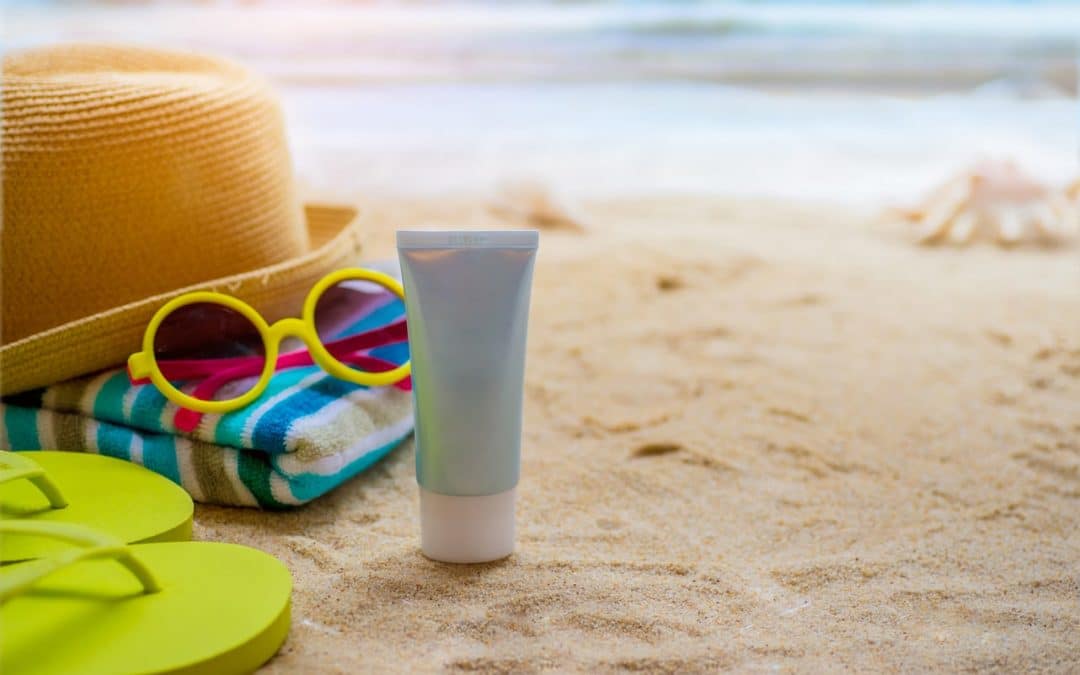Skin Cancer
Each year there are more new cases of skin cancer than breast, prostate, lung and colon cancer combined, making skin cancer the most common cancer in the United States. It is estimated by the American Cancer Society that there will be 192,310 new cases of melanoma, 95,830 noninvasive (in situ) and 96,480 invasive, diagnosed in the U.S in 2019.
According to The Skin Cancer Foundation, a person’s risk for melanoma doubles if he or she has had more than five sunburns, so it is incredibly important to wear sunscreen whenever you are outside. Just by wearing SPF 15 or higher when you are outside, you reduce the risk of developing squamous cell carcinoma by 40% and the risk of developing melanoma by 50%.
Choosing the Best Sunscreen
With so many sunscreens on the market today, it can be difficult to sort through all the labels and marketing tactics and pick the best sunscreen for you and your family. Luckily, there are many great resources out there to help you! Listed below are the best tips for choosing sunscreen based on recommendations from The Skin Cancer Foundation, The American Cancer Society and EWG’s 12th Annual Guide To Sunscreens.
- Don’t Assume Higher SPF is Better: High-SPF sunscreens are made with higher concentrations of chemicals and some of these ingredients penetrating the skin in high doses may pose health risks, including tissue damage and hormone disruption. Sunscreen with values of 30-50 SPF will offer adequate sunburn protection if applied correctly, even for people most susceptible to sunburn.
- Avoid Sunscreens With Oxybenzone: The common sunscreen chemical, oxybenzone, is an allergen and a hormone disruptor that soaks through skin. Not only does it pose a hazard to human health, it also has negative effects on the environment.
- Avoid Sunscreens With Vitamin A: A form of Vitamin A contained in sunscreens, retinyl palmitate, may actually speed up the development of skin tumors and lesions when applied to the skin exposed to direct sunlight.
- Look for Mineral Sunscreens: Mineral sunscreens are made with zinc oxide and titanium dioxide.These types of sunscreens rank higher in safety than chemical based sunscreens and are more stable in sunlight.
- Look for Fragrance Free: Fragrance free sunscreens contain less chemicals and are more gentle on the skin.
- Inactive Ingredients: Avoid sunscreens that list “methylisothiazolinone” as an inactive ingredient or preservative. It is a skin sensitizer or allergen, and has been linked to causing severe skin allergies, especially in children exposed to the ingredient.
In EWG’s 12th Guide To Sunscreens, they investigated approximately 650 beach and sport sunscreens and found 243 to meet their criteria. They also have ranked the best SPF moisturizers and lip balms. We recommend checking these lists before choosing a sunscreen, moisturizer, or lip balm to ensure you are adequately protected from sunburn!
Additional Tips For Preventing Sunburn
Listed below are additional steps you can take to help prevent getting a sunburn:
- Reapply sunscreen frequently while out in the sun.
- 10am-2pm are the peak burn hours, so whenever possible, plan your activities for the morning or evening to avoid being exposed during this time.
- Wear protective clothing such as shirts with UPF protection, sunglasses with UV protection, and a hat.
- Spend time in the shade. If there is not shade available, bring and umbrella or a tent to create your own.
- Avoid tanning beds, sun lamps, tanning pills, or any tan enhancing products.



